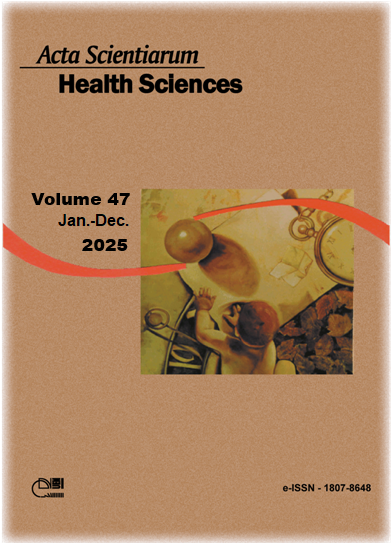Correlation of biochemical and anthropometric parameters with tooth loss in older adults
Abstract
This study estimated the impact of tooth loss on biochemical parameters and anthropometric indicators of adiposity in older adults. A three-step data collection was conducted. First, trained interviewers applied a questionnaire for collecting sociodemographic and economic information to people aged 60 or over, in their households. Second, a dental surgeon and a physical educator assessed the oral condition and anthropometric measurements. Finally, biochemists obtained blood samples to analyze biochemical parameters. Descriptive analyses, Pearson’s correlation, and multiple linear regression were performed using SPSS and STATA software. A total of 117 older adults, mean age of 71.2 years, were evaluated, 62.4% of whom were female. Cavities had a 100% prevalence, average DMFT index was 27.8, and missing component was the most prevalent (24.8). The final regression model found a correlation between tooth loss and females, vitamin B12, glycated hemoglobin, and magnesium. Older adults living in Aiquara showed a correlation between tooth loss and females, vitamin B12, glycated hemoglobin, and magnesium.
Downloads
Copyright (c) 2025 Acta Scientiarum. Health Sciences

This work is licensed under a Creative Commons Attribution 4.0 International License.
DECLARATION OF ORIGINALITY AND COPYRIGHTS
I Declare that current article is original and has not been submitted for publication, in part or in whole, to any other national or international journal.
The copyrights belong exclusively to the authors. Published content is licensed under Creative Commons Attribution 4.0 (CC BY 4.0) guidelines, which allows sharing (copy and distribution of the material in any medium or format) and adaptation (remix, transform, and build upon the material) for any purpose, even commercially, under the terms of attribution.
Read this link for further information on how to use CC BY 4.0 properly.























5.png)







